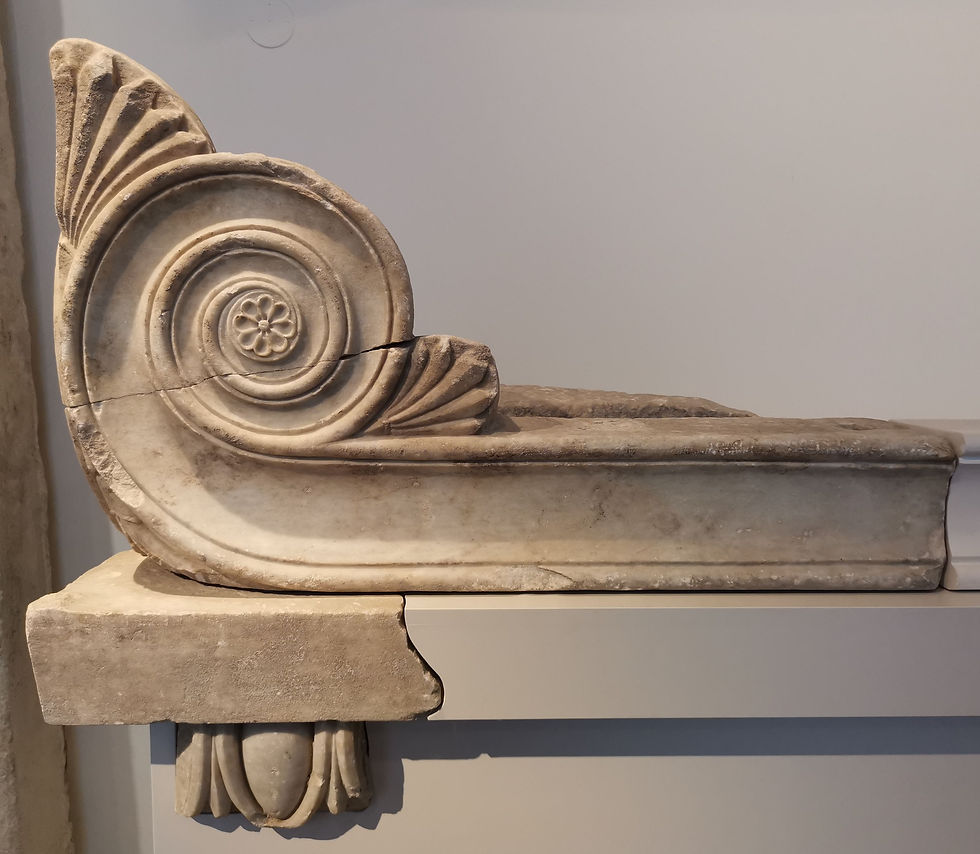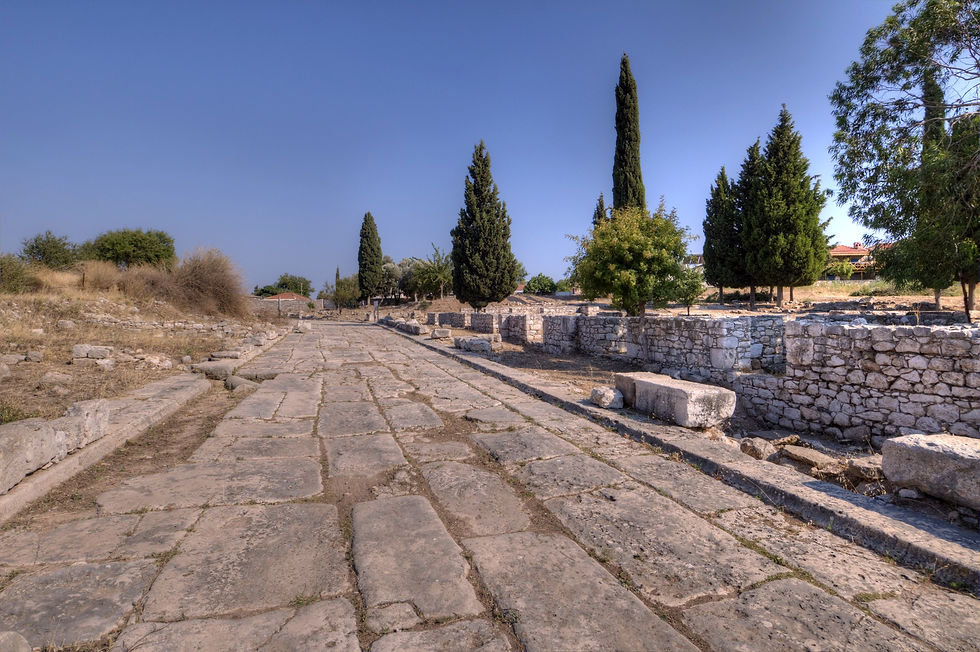Reimagining Didyma's Sacred Way
- Jay Jean Jackson

- Aug 28
- 3 min read
Some 2,500 years ago, the annual spring festivities were starting in Miletus. They’d taken place, and would continue to do so, for many centuries. The atmosphere around Miletus and Apollo Temple would have been electric, as the crowds gather. It is a celebration to honour the Greek God Apollo, the God of music, dance and poetry, prophecy and oracles, archery, healing, and disease. The Cult of Apollo has begun.

The celebrations begin at the Apollo Delphinium as pilgrims arrive in Miletus from other cities and islands for the four-day spiritual journey, in search of wisdom, healing, self-discovery and divine connections. Sacrifices are offered to the Gods and heroes during a four-day 16.3-kilometre procession along the Sacred Way to the temple of Apollo. Upon arrival, their athletic competitions of boxing, wrestling, and races take place, before the much-anticipated prophecies for the future are revealed by the oracle.

The journey is beautiful. It is the spring month of Tauren, in the Ancient Greek calendar and the procession has begun. The flora is in full bloom, highlighting the arrival of spring. The days are filled with birdsong. The nights with the howling chorus of the Jackal and grunting of wild boar, as if they too are joining the festive atmosphere.

There are seven stops to be made, visiting shrines, temples, and the oracle, all built at places believed to hold divine energy and mystical powers. The first is in celebration of Hekate, the goddess of magic, spells, the night, the moon, and crossroads. The shrine to Hecate, (Hekataion) is placed at the doorway to the city, and she is worshipped as the protector, to safeguard the city from evil spirits of the restless dead. Sacred black stones (Baetylus) carried by Milesian priests are placed at the gates of Miletus and the Apollo Temple, they are covered in wreaths and doused with wine in honour of Hecate and the first holy songs (paion) are sung.

After the rituals and sacrifices are made, the procession leaves the sacred gate of Miletus and soon arrives at the second stop, ‘Dynamis’, meaning power, to honour the Milesian magistrates.
The journey continues through the meadow of Clamour and grasslands with a steep climb across the Acron hills, meandering through the forest paths of oak trees (Drymos), where there is shade to sit and rest. After a rest, it continues its journey until it reaches the sanctuary of the Nymphs where the goddesses of nature are honoured.

There are resting places and shops along the route. The next stop is at the Terrace of Sphinxes where communal feasting, drinking, and celebrations take place before the Pilgrims continue towards the monument to celebrate and honour Hermes, the messenger God who is also the protector of travellers. People stop at natural springs to quench their thirst as the temperatures rise.

The next stop is in honour of Phylios, the protector of the Milesian Tribes. The crowds have grown as many, especially the more affluent Milesians, have landed by boat at Panormos harbour to join the celebrations. Together they honour Apollo Phylios, the horned one. The feeling of apprehension and anticipation is growing as the crowds near the temple.
The last stop is Chares, where the Branchid priests are honoured. Statues of them line the streets leading to the second set of sacred stones.
The road is lined with stalls selling food and drinks to the travellers in the procession. There is even a main bathing area for pilgrims to clean themselves after the walk from Miletus before they enter the final stage of the festivities.

The crowds have arrived at Apollo Temple. Women seers greet the pilgrims. The winners from the games are awarded laurel wreaths and statues on the presentation terrace to the applause of the crowd.

Some people sit on the steps of the Temple playing backgammon and other games on boards carved into the stonework.

The atmosphere changes as the crowds fall silent with anticipation as the Oracle, having chewed laurel and drunk from the sacred spring, is now in a trance. The Priests (Branchidae) are waiting to deliver the predictions, which are announced as a six-verse poem (hexametric) – what does the future hold?

This article originally appeared in Turkish Archaeological News (www.turkisharchaeonews.net)





Comments